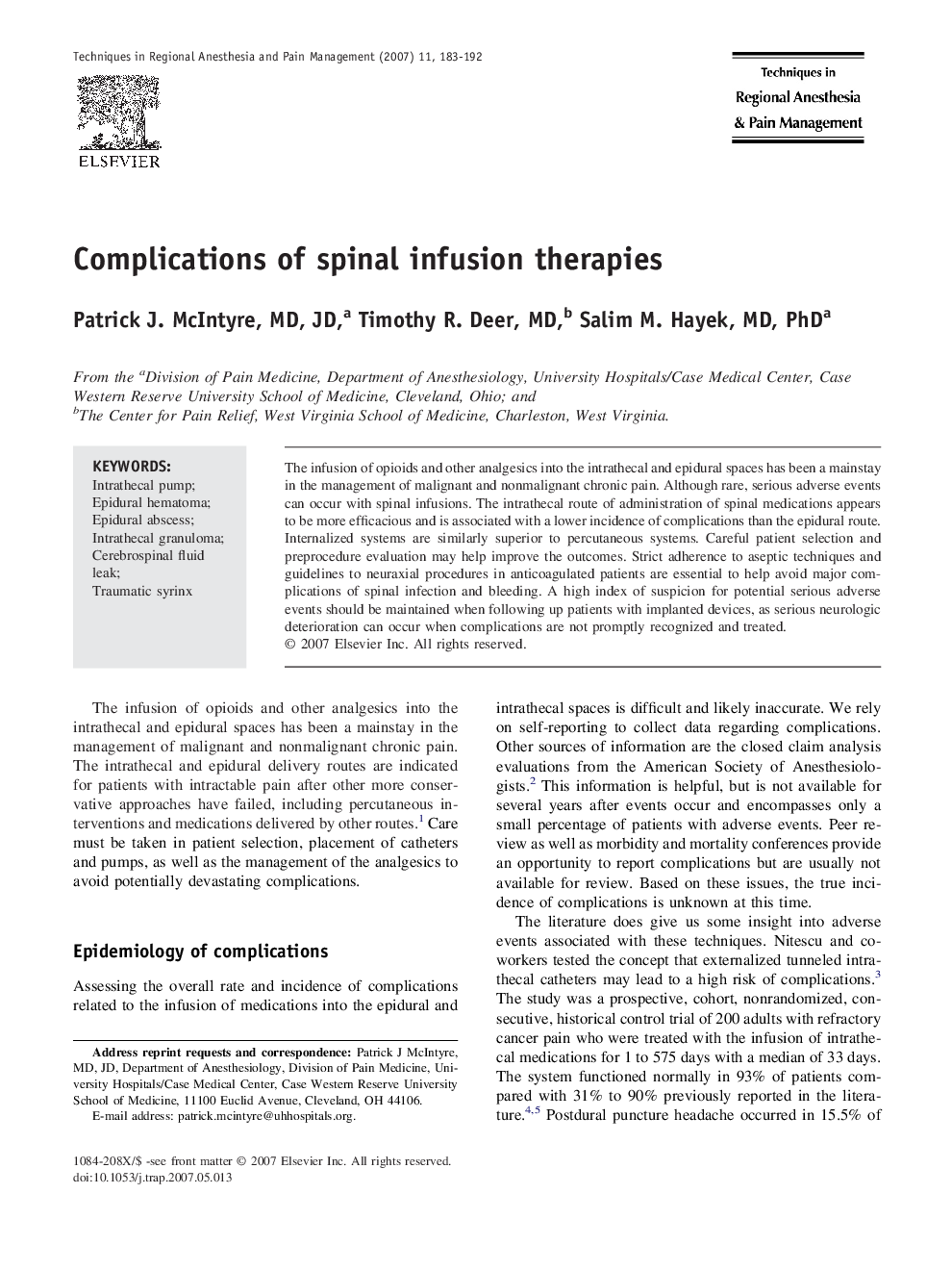| کد مقاله | کد نشریه | سال انتشار | مقاله انگلیسی | نسخه تمام متن |
|---|---|---|---|---|
| 2772488 | 1152032 | 2007 | 10 صفحه PDF | دانلود رایگان |

The infusion of opioids and other analgesics into the intrathecal and epidural spaces has been a mainstay in the management of malignant and nonmalignant chronic pain. Although rare, serious adverse events can occur with spinal infusions. The intrathecal route of administration of spinal medications appears to be more efficacious and is associated with a lower incidence of complications than the epidural route. Internalized systems are similarly superior to percutaneous systems. Careful patient selection and preprocedure evaluation may help improve the outcomes. Strict adherence to aseptic techniques and guidelines to neuraxial procedures in anticoagulated patients are essential to help avoid major complications of spinal infection and bleeding. A high index of suspicion for potential serious adverse events should be maintained when following up patients with implanted devices, as serious neurologic deterioration can occur when complications are not promptly recognized and treated.
Journal: Techniques in Regional Anesthesia and Pain Management - Volume 11, Issue 3, July 2007, Pages 183–192